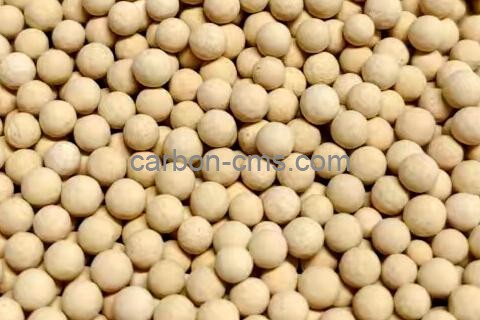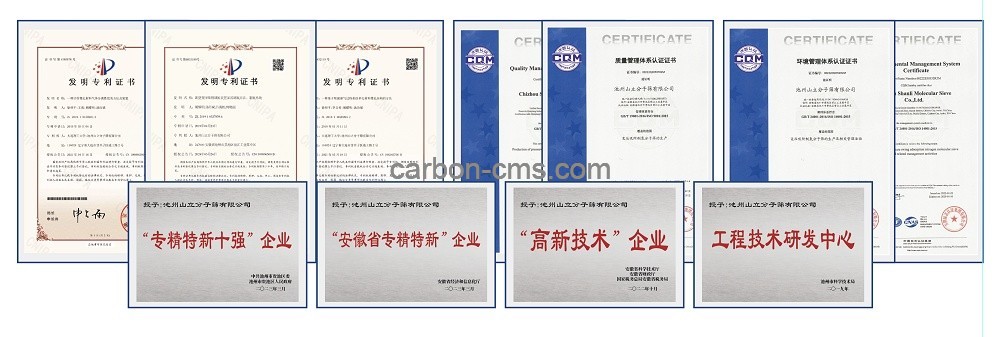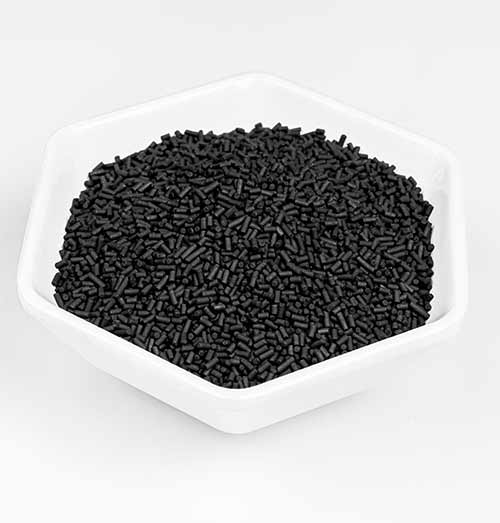5A Molecular Sieve is an alkali metal aluminosilicate. It is a calcium type of A-type crystal structure and can adsorb any molecules with a diameter smaller than 5A. In addition to the effects of 3A and 4A molecules, it can also adsorb C3-C4 n-alkanes,ethyl chloride, ethyl bromide, butanol, etc.
Item No :
SL-5AShipping port :
Shanghai,Ningbo,Tianjin etc.Lead time :
3-5 daysAppearance :
Light grayshape :
Sphere,PelletPore Diameter :
5 angstromsDiameter :
1.6-2.5, 3.0-5.0, 1.5-1.7, 3.0-3.3Package :
140kg per drum
SHANLI 5A Molecular Sieve Zeolite For PSA System
Typical chemical formula: 0.7CaO-0.3Na2O·Al2O3·2SiO2·4.5H2O (SiO2:Al2O3≈2)
Technical specifications
| Item | Parameters | |||
| Shape | Sphere | Pellet | ||
| Diameter (mm) | 1.6-2.5 | 3.0-5.0 | 1.5-1.7 | 3.0-3.3 |
| Bulk Density (g/ml) | ≥0.68 | ≥0.68 | ≥0.66 | ≥0.66 |
| Compressive Strength(N/piece) | ≥30.0 | ≥80.0 | ≥30.0 | ≥50.0 |
| Particle Size Pass Rate (%) | ≥96.0 | ≥96.0 | ≥96.0 | ≥94.0 |
| Static Water Adsorption (%)(35±1)℃ Saturated Salt Water, 24 hours | ≥21 | ≥21 | ≥20.5 | ≥20.5 |
| Static Ethylene Adsorption (mg/g) | ≥12.5 | ≥12.5 | ≥12.5 | ≥12.5 |
| Moisture Content (%)(550±10)℃,1hour | ≤1.5 | ≤1.5 | ≤1.5 | ≤1.5 |
| Wear rate (%) | ≤0.2 | ≤0.2 | ≤0.4 | ≤0.4 |

SHANLI 5A molecular sieve
Molecular sieve 5A also known as molecular sieve calcium with an aperture of about 5 angstroms(0.48nm),it can absorb any molecular with pore size less than 5A,except the 3A and 4A function,it also can absorb C3-C4 normal alkane,ethyl chlorine,ethyl bromide,butyl alcohol.
It is also used for separation of n-iso hydrocarbon,pressure swing adsorption(PSA) and CO adsorption of carbon dioxide and water.
Our Certificates

Delivery&Packaging

Main Application
1.Drying for Natural gas, desulphrize, carbon dioxide removal
2.Nitrogen and oxygen separation, Separation of nitrogen and hydrogen, Oxygen, Hydrogen production, PSA
3.Oil dewaxing, normal hydrocarbon separation from branched hydrocarbon, cyclic hydrocarbon.
4.Air purification, dehydration and carbon dioxide removal;
FAQ
What’s the difference between molecular sieves, activated alumina, and silica gel?
- Selectivity: Molecular sieves have precise pore sizes; silica gel/alumina have broader distributions.
- Humidity performance: Molecular sieves outperform at low humidity.
- Heat resistance: Sieves withstand >350°C; silica gel degrades above 200°C.
How to regenerate molecular sieves?
- Thermal regeneration: 200–350°C under dry gas (e.g., N₂) for 2–4 hours.
- Pressure swing (PSA): Releases adsorbates via pressure changes.
- Caution: Avoid steam exposure at high temperatures to prevent structural damage.
What is the lifespan of a molecular sieve?
- Typically 2–5 years, depending on conditions (temperature, contaminants, regeneration cycles). Performance decline shows as reduced adsorption or increased pressure drop.
Copyright @ 2025 Chizhou Shanli Molecular Sieve Co., Ltd. All Rights Reserved.
 Network Supported
Network Supported
